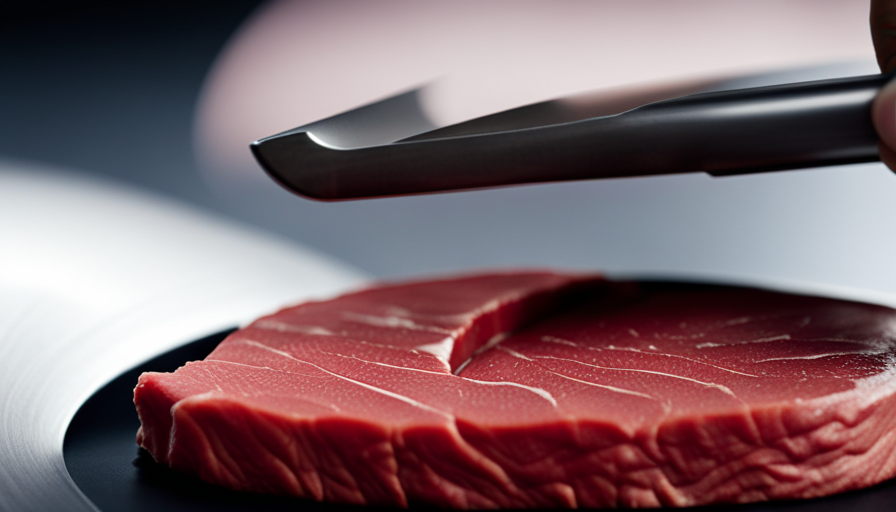Do you feel exhausted, bloated, and burdened by unhealthy eating habits? It’s time to refresh and invigorate your body with a raw food detox. By incorporating raw, unprocessed foods into your diet, you can detoxify your body, increase your energy levels, and reinvigorate your overall well-being.
In this article, we will guide you through the process of how to do a raw food detox, step by step. From understanding the benefits of a raw food detox to transitioning to a raw food diet, stocking your pantry with essentials to planning balanced meals, we have you covered. We will even show you how to incorporate superfoods into your detox for maximum health benefits.
Get ready to indulge in delicious raw food recipes for lunch, dinner, snacks, and desserts. Let’s dive in and discover how a raw food detox can transform your life.
Key Takeaways
- Raw food detox can rejuvenate and revitalize the body, cleanse the system, boost energy, aid digestion, support the immune system, promote weight loss, and improve gut health.
- Transitioning to a raw food diet should be done slowly, with experimentation of recipes and staying hydrated.
- Challenges of transitioning to a raw food diet include social situations, cravings, and maintaining nutritional balance.
- A well-stocked raw food pantry with essentials like fruits, vegetables, nuts, seeds, dried fruits, and superfoods is crucial for maintaining a raw food diet.
Understanding the Benefits of a Raw Food Detox
To fully comprehend the advantages of a raw food detox, it’s crucial to understand the numerous benefits it can provide for your overall well-being. Understanding the science behind a raw food detox is key to appreciating its impact on your body.
Raw foods are rich in enzymes, which aid in digestion and absorption of nutrients. These enzymes are destroyed when foods are cooked, making a raw food detox an ideal way to give your digestive system a break and allow it to function optimally.
Additionally, raw foods are packed with vitamins, minerals, and antioxidants that can support your immune system and help fight off diseases. The high fiber content in raw foods also promotes healthy bowel movements, preventing constipation and supporting gut health. Furthermore, raw foods are generally low in calories and fat, making them an excellent choice for weight loss and maintaining a healthy weight.
However, it’s important to explore the potential drawbacks of a raw food detox. Some people may experience initial discomfort, such as bloating or gas, as their bodies adjust to a raw food diet. It’s also essential to ensure that you’re getting all the necessary nutrients from a variety of raw foods to avoid deficiencies.
A raw food detox can offer numerous benefits for your overall well-being. Understanding the science behind it and being aware of potential drawbacks can help you make informed decisions about incorporating a raw food detox into your lifestyle.
Transitioning to a Raw Food Diet
Transitioning to a raw food diet can be a challenging yet rewarding journey as you discover a whole new world of vibrant flavors and nourishing plant-based options. Here are some transitioning tips to help you navigate this exciting lifestyle change:
-
Take it slow: Start by incorporating more raw fruits and vegetables into your meals gradually. This’ll allow your body to adjust to the increased fiber and enzymes present in raw foods.
-
Experiment with recipes: Raw food doesn’t have to be boring! Explore different recipes and techniques to keep your meals interesting. From zoodles to raw desserts, there’re plenty of delicious options to choose from.
-
Stay hydrated: Raw foods’re naturally high in water content, but it’s still important to drink enough water throughout the day. Hydration’s key to support digestion and eliminate toxins from your body.
Transitioning to a raw food diet can come with its fair share of challenges. Common challenges you may encounter include:
-
Social situations: Eating out or attending social events can be tricky when following a raw food diet. Plan ahead and communicate your dietary needs to ensure there’re suitable options available.
-
Cravings: It’s normal to experience cravings for cooked or processed foods during the transition period. Find healthy alternatives or indulge in raw treats to satisfy these cravings.
-
Nutritional balance: A raw food diet can be nutritionally dense, but it’s important to ensure you’re getting all the essential nutrients. Consult with a healthcare professional or registered dietitian to ensure you’re meeting your nutritional needs.
Remember, transitioning to a raw food diet’s a personal journey, and it’s essential to listen to your body’s needs and make adjustments accordingly. With time and patience, you’ll be able to embrace this vibrant and nourishing way of eating.
Stocking Your Pantry with Raw Food Essentials
When stocking your pantry with raw food essentials, imagine shelves filled with vibrant, fresh produce and jars of nuts, seeds, and dried fruits waiting to be transformed into nourishing and delicious meals. Raw food pantry organization is key to ensuring you have everything you need to maintain a raw food diet. To help you get started, here is a table with five rows and three columns that showcases some essential raw food ingredients:
| Category | Examples | Benefits |
|---|---|---|
| Fruits | Apples, bananas, berries | High in fiber and antioxidants |
| Vegetables | Leafy greens, cucumbers, peppers | Packed with vitamins and minerals |
| Nuts and Seeds | Almonds, chia seeds, flaxseeds | Rich in healthy fats and protein |
| Dried Fruits | Dates, raisins, apricots | Natural sweetness and energy boost |
| Superfoods | Spirulina, maca powder, cacao nibs | Provides extra nutrients and antioxidants |
When finding raw food ingredients, opt for organic options whenever possible to minimize exposure to harmful pesticides. Look for local farmers’ markets or health food stores to source fresh produce. For nuts, seeds, and dried fruits, choose raw and unsalted varieties to avoid added oils and preservatives. Additionally, consider investing in a dehydrator to make your own raw snacks like kale chips or fruit leather. With a well-stocked raw food pantry, you’ll have everything you need to create nourishing meals that support your raw food detox journey.
Planning Balanced Meals on a Raw Food Detox
Creating balanced meals on a raw food detox is like crafting a symphony of flavors and textures that tantalize your taste buds and leave you feeling energized and vibrant. Meal planning is key to ensuring you get the right nutrient balance while on this detox. Here are some tips to help you plan your meals effectively:
-
Start with a variety of fruits and vegetables: Incorporate a wide range of colors to ensure you get a diverse array of vitamins, minerals, and antioxidants. Think leafy greens, vibrant berries, and crunchy carrots.
-
Include sources of plant-based protein: Raw nuts and seeds, such as almonds, walnuts, and chia seeds, are excellent sources of protein on a raw food detox. Sprouted legumes, like chickpeas and lentils, can also be included.
-
Don’t forget healthy fats: Avocados, coconut oil, and cold-pressed olive oil are great sources of healthy fats that provide satiety and promote nutrient absorption.
-
Experiment with herbs and spices: Fresh herbs like basil, cilantro, and mint can add a burst of flavor to your meals. Spices like turmeric, ginger, and cayenne pepper have anti-inflammatory properties.
-
Stay hydrated: Include plenty of water-rich foods like cucumbers and watermelon to stay hydrated and support detoxification.
By following these tips, you can ensure that your raw food detox is not only delicious but also nutritionally balanced for optimal health and well-being.
Incorporating Superfoods into Your Raw Food Detox
To supercharge your raw food detox, amp up the nutrient density by incorporating superfoods into your meals. Superfoods are packed with vitamins, minerals, and antioxidants that can help boost your energy levels and support your overall health.
One easy way to incorporate superfoods into your raw food detox is by making superfood smoothie recipes. These smoothies can be a delicious and convenient way to get a variety of nutrients in one glass. You can add superfoods like kale, spinach, berries, chia seeds, and maca powder to your smoothies to enhance their nutritional value.
Another way to incorporate superfoods into everyday meals is by adding them to your salads, soups, or stir-fries. You can sprinkle hemp seeds, goji berries, or spirulina on top of your salads for an extra nutrient boost. Adding flaxseed or cacao nibs to your raw food desserts can also increase their superfood content.
By incorporating superfoods into your raw food detox, you can maximize the health benefits of your meals and support your body’s natural detoxification processes.
Raw Food Recipes for Breakfast
Now that you’ve learned about incorporating superfoods into your raw food detox, it’s time to dive into some delicious raw food recipes for breakfast.
Starting your day with a nutrient-packed meal is essential for a successful detox. Raw food smoothie recipes are a great option as they’re quick, easy to make, and provide a burst of energy to kickstart your morning. You can experiment with different combinations of fruits, vegetables, and superfoods to create a variety of flavors. Consider adding ingredients like spinach, kale, berries, chia seeds, and almond milk to your smoothies for an extra dose of vitamins and minerals.
In addition to smoothies, raw food salad recipes are another fantastic breakfast option. Salads can be made with a variety of fresh vegetables, nuts, and seeds. Try mixing greens like romaine lettuce, cucumber, bell peppers, and tomatoes with avocado, hemp seeds, and a drizzle of lemon juice for a refreshing and satisfying meal. Adding a source of plant-based protein such as chickpeas or quinoa can make your salad even more filling.
To make your raw food detox journey enjoyable and diverse, here are some recipe ideas for breakfast:
- Berry Blast Smoothie: Blend together frozen berries, spinach, almond milk, and a tablespoon of chia seeds for a nutritious and delicious smoothie.
- Green Goddess Salad: Toss together romaine lettuce, cucumber, avocado, hemp seeds, and a squeeze of lemon juice for a refreshing and energizing breakfast salad.
- Tropical Paradise Smoothie: Combine frozen pineapple, mango, coconut water, and a handful of spinach for a tropical-inspired smoothie that’ll transport you to an island getaway.
- Nutty Quinoa Salad: Mix cooked quinoa with chopped bell peppers, cherry tomatoes, cucumber, and a sprinkle of chopped almonds for a protein-packed breakfast salad.
Remember, these recipes are just a starting point, and you can always customize them to suit your taste preferences and nutritional needs. Enjoy the journey of discovering new flavors and nourishing your body with raw food goodness.
Raw Food Recipes for Lunch
Let’s dive into some delicious recipes for a flavorful and nutritious raw food lunch! Raw food lunch ideas can be both satisfying and nourishing. By incorporating raw foods into your lunch, you can reap the many benefits they offer. Raw food is packed with nutrients, enzymes, and antioxidants that can boost your energy levels, improve digestion, and support overall health.
One great raw food lunch idea is a colorful veggie wrap. Fill a collard green leaf with a variety of sliced vegetables like bell peppers, carrots, cucumbers, and avocado. Drizzle with a tahini or almond butter dressing for added creaminess and flavor. Another option is a raw pad thai salad. Spiralize zucchini and carrots as the base, then add in bean sprouts, shredded cabbage, and chopped peanuts. Toss with a tangy almond butter and lime dressing for a refreshing and satisfying lunch.
When it comes to raw food for lunch, the possibilities are endless. You can create vibrant salads with mixed greens, cherry tomatoes, radishes, and sunflower seeds. Or try a raw vegetable sushi roll using nori sheets, julienned vegetables, and a creamy cashew cheese filling. These raw food lunch ideas not only taste delicious but also provide your body with essential nutrients and enzymes to support optimal health. So why not give them a try and enjoy the benefits of raw food for lunch?
Raw Food Recipes for Dinner
Indulge in the mouthwatering flavors of a raw food feast for dinner and unlock a world of vibrant and nourishing culinary creations. When it comes to raw food dinner ideas, the options are endless. Not only are raw food recipes packed with nutrients, but they also provide a refreshing and satisfying alternative to cooked meals.
To incorporate raw food into your dinner routine, start by experimenting with different salads. Mix up your greens and add a variety of colorful vegetables, fruits, nuts, and seeds for added texture and flavor. You can also try making raw sushi rolls using nori sheets, fresh veggies, and avocado. It’s a fun and creative way to enjoy a raw food dinner.
Another great idea is to spiralize your vegetables and create raw pasta dishes. Zucchini noodles, also known as zoodles, make a delicious base for a raw food pasta. Top it with a flavorful sauce made from tomatoes, herbs, and spices, and you have a nutritious and satisfying dinner.
When incorporating raw food into your dinner routine, it’s important to listen to your body and make adjustments accordingly. Some people thrive on a fully raw diet, while others prefer to include a mix of raw and cooked foods. Find what works best for you and enjoy the benefits of a raw food detox for dinner.
Raw Food Snacks and Desserts
Satisfy your sweet tooth and nourish your body with delectable raw food snacks and desserts. Raw food snacks and desserts aren’t just delicious, but they’re also packed with nutrients and are easy to make. Here are some raw food snack ideas and raw food dessert recipes to add to your detox plan:
-
Energy Balls: These bite-sized treats are made with a blend of nuts, seeds, and dried fruits. They’re perfect for a quick pick-me-up during the day.
-
Fruit Salad: A simple and refreshing snack, fruit salad can be made with a variety of fresh fruits such as berries, melons, and citrus fruits. Add a squeeze of lemon or a sprinkle of mint for extra flavor.
-
Raw Chocolate Pudding: This creamy and indulgent dessert is made with avocados, raw cacao powder, and sweetened with dates or maple syrup. It’s a guilt-free way to satisfy your chocolate cravings.
-
Raw Cheesecake: Made with a combination of nuts, dates, and fruits, raw cheesecake is a healthier alternative to traditional cheesecake. It’s rich, creamy, and bursting with flavor.
These raw food snack ideas and dessert recipes aren’t just delicious but also nutritious. Incorporating these treats into your raw food detox plan will keep you satisfied and on track with your healthy eating goals.
Staying Motivated and Maintaining a Raw Food Lifestyle
Now that you’ve learned about some delicious raw food snacks and desserts to satisfy your cravings, let’s talk about how to stay motivated and maintain a raw food lifestyle.
Staying motivated is crucial when it comes to any dietary change, and a raw food detox is no exception. While the initial excitement of starting something new can provide a burst of motivation, it’s important to find ways to stay inspired in the long run.
One of the best ways to stay motivated is to set realistic goals for yourself. Start small and gradually increase the amount of raw food in your diet. Celebrate your successes along the way, whether it’s trying a new raw recipe or going a week without eating processed foods.
Surrounding yourself with a supportive community can also make a big difference. Join online forums or local raw food groups where you can connect with others who share your goals.
Of course, it’s normal to face challenges on your raw food journey. Cravings for cooked foods or social pressures to eat differently can be tough to navigate. However, remember why you started this detox in the first place. Remind yourself of the health benefits of a raw food lifestyle and how it aligns with your personal goals. Find healthy substitutes for your favorite cooked dishes and explore new flavors in the raw food world.
By staying motivated and overcoming challenges, you can successfully maintain a raw food lifestyle and reap the many benefits it has to offer.
Frequently Asked Questions
Can I still eat cooked foods while doing a raw food detox?
While doing a raw food detox, it’s best to avoid cooked foods. The purpose of a raw food detox is to consume unprocessed, nutrient-rich foods. However, you can still enjoy cooked food alternatives that are in line with the principles of a raw food detox. These include steamed vegetables, vegetable soups, and raw food recipes that have been dehydrated.
Remember, the benefits of a raw food detox include increased energy, improved digestion, and weight loss.
Are there any potential side effects of a raw food detox?
Potential side effects of a raw food detox can include fatigue, headaches, and digestive issues. However, these risks can be minimized by taking certain precautions. Make sure to stay hydrated and consume enough calories from a variety of raw fruits, vegetables, nuts, and seeds.
Gradually transition into a raw food diet to allow your body to adjust. It’s also important to listen to your body and consult with a healthcare professional if you have any concerns.
How long should I do a raw food detox for?
The duration of a raw food detox can vary depending on individual goals and needs. While some people choose to do a raw food detox for a few days or a week, others may opt for a longer period of time, such as two to four weeks.
The benefits of a raw food detox include increased energy, improved digestion, weight loss, and a boost in nutrient intake. However, it’s important to listen to your body and consult with a healthcare professional before starting any detox program.
Can I still exercise while on a raw food detox?
Yes, you can definitely still exercise while on a raw food detox. It’s important to make some modifications to your exercise routine to ensure that your body is properly supported during the detox process. Opt for low-impact exercises like yoga, swimming, or walking, and listen to your body’s needs. The benefits of exercising during a detox include improved circulation, enhanced detoxification through sweating, and increased energy levels. Remember to stay hydrated and give yourself proper rest and recovery time.
Can I drink alcohol or coffee during a raw food detox?
During a raw food detox, it’s recommended to avoid alcohol due to its negative impact on the detoxification process. Alcohol can strain your liver and hinder the body’s ability to eliminate toxins. Instead of coffee, which can be dehydrating and acidic, opt for herbal teas or green smoothies to stay hydrated and boost energy levels. These alternatives provide essential nutrients and antioxidants without the negative effects of alcohol and coffee.
Is There a Recommended Duration for a Raw Food Detox?
Yes, there is a recommended duration for detoxing with raw food. Typically, a raw food detox can last anywhere from 3 days to 3 weeks, depending on individual goals and health conditions. It’s important to consult a healthcare professional before starting any detox program.
Conclusion
In conclusion, a raw food detox can be a beneficial way to cleanse your body and improve your overall health. By transitioning to a raw food diet and stocking your pantry with raw essentials, you can easily plan balanced meals and incorporate superfoods into your detox.
With delicious raw food recipes for lunch, dinner, snacks, and desserts, you can enjoy a variety of tasty options while staying motivated on your raw food journey. And here’s an interesting statistic: studies have shown that a raw food diet can increase the intake of vitamins and antioxidants by up to 40%!
So start your raw food detox today and experience the amazing benefits for yourself.










